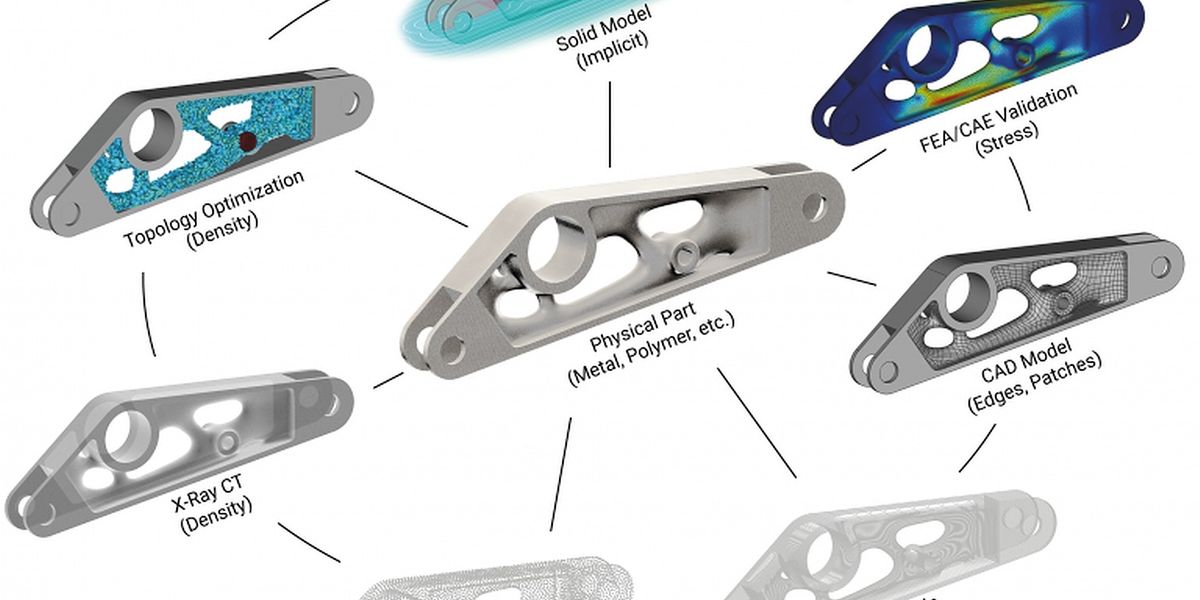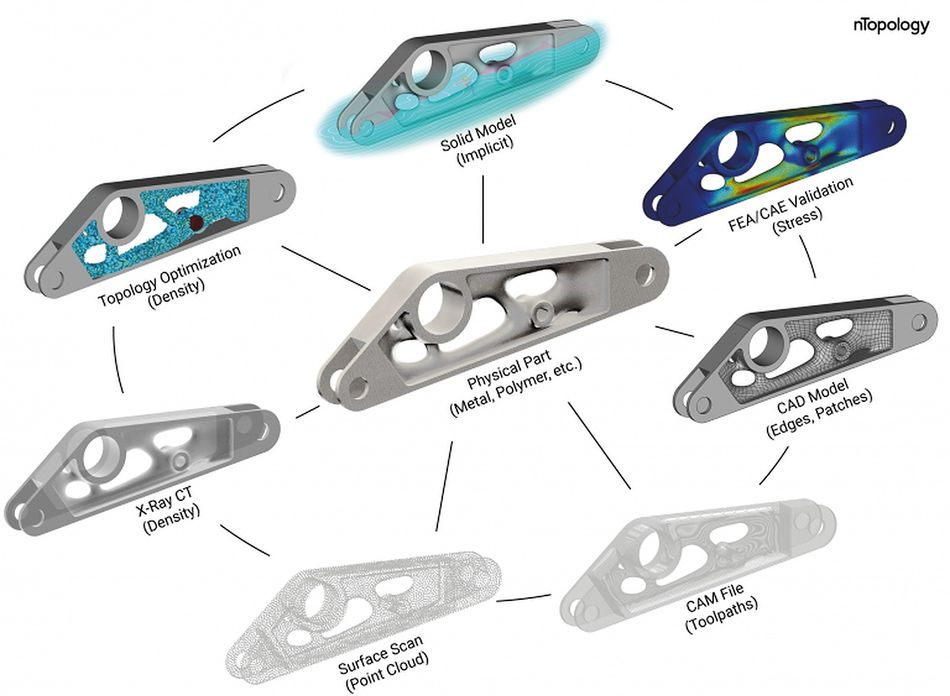Elevating Design and Cutting Costs - Structural Lightweighting

By utilizing a computational modeling approach to design, designers can now leverage the mixed data-sources seen in the image above, amongst others involved in modern engineering, to create a lighter, stronger, and smarter part.
Fueled by computational modeling and the ability to synthesize data and leverage it within a design, coupled with technology to create complex geometries, industries are able to deliver more cost efficient parts without sacrificing performance.
This article was first published on
ntopology.comWith an ever changing world, we have required that the products that we use every day keep pace. We have asked that they be faster, stronger, smaller, and lighter. Better designed parts, lends to better performing parts; furthermore, more efficiency in our daily lives, right?
Various industries such as aerospace, automotive, and consumer products are continuing to push the boundaries of design to accommodate our fast paced environment. Lighter and smarter parts not only have a beneficial impact on part performance, but they also correlate to increased safety, decreased manufacturing and operating costs, and improved environmental sustainability.
A New Era of Design
nTopology recognized a paradigm shift in design; consequently, we introduced a unique approach to modeling, which has been leveraged by additive manufacturing processes to open the door to an unparalleled approach to part design. By incorporating nTop Platform into an organization’s engineering workflow, engineers are now equipped with the tools needed to create complex, high performing parts in significantly less time and cost.
The ability to incorporate the modeling and manufacturing techniques made possible by additive manufacturing have been leveraged by engineers in various industries today. Designers within the aerospace and automotive industry have produced composite panels using foam or honeycomb cores to reduce weight in structures. The consumer products industry has found value in lightweight parts in improving the ergonomic experience for the end user such as a lattice helmet liner capable of reducing impact forces and optimizing fit and comfort for athletes. Industries are continually discovering exciting opportunities and innovative ways to lightweight parts. Applying variable shelling, unique lattice structures, or structural ribbing are other techniques designers have utilized to produce lighter parts while still maintaining stiffness and strength.
Not only are design processes achieving more complexity, we are also able to incorporate a more intelligent methodology to part design. Brought to fruition by computational modeling, engineers can introduce a multi-faceted approach to design by synthesizing various data such as FEA (Finite Element Analysis) results or real measurements such as scan data into a single high performance part.

A computational modeling approach allows engineers to capture all of the valuable engineering data within an organization, whether it be knowledge of design experts or simulation experts, and combine it to create intelligent and adaptive engineering models that transform industry standards.
Please join me on August 25th for a webinar in which I will delve into these various lightweighting techniques and nTop Platform’s approach to design for additive manufacturing.
This article was first published on the nTopology blog.